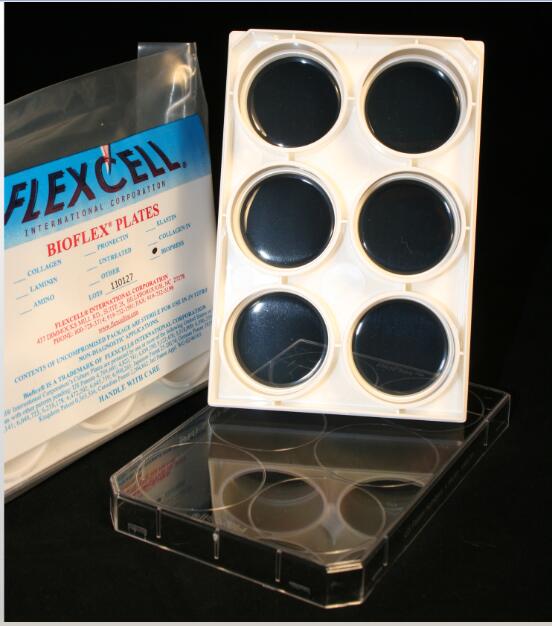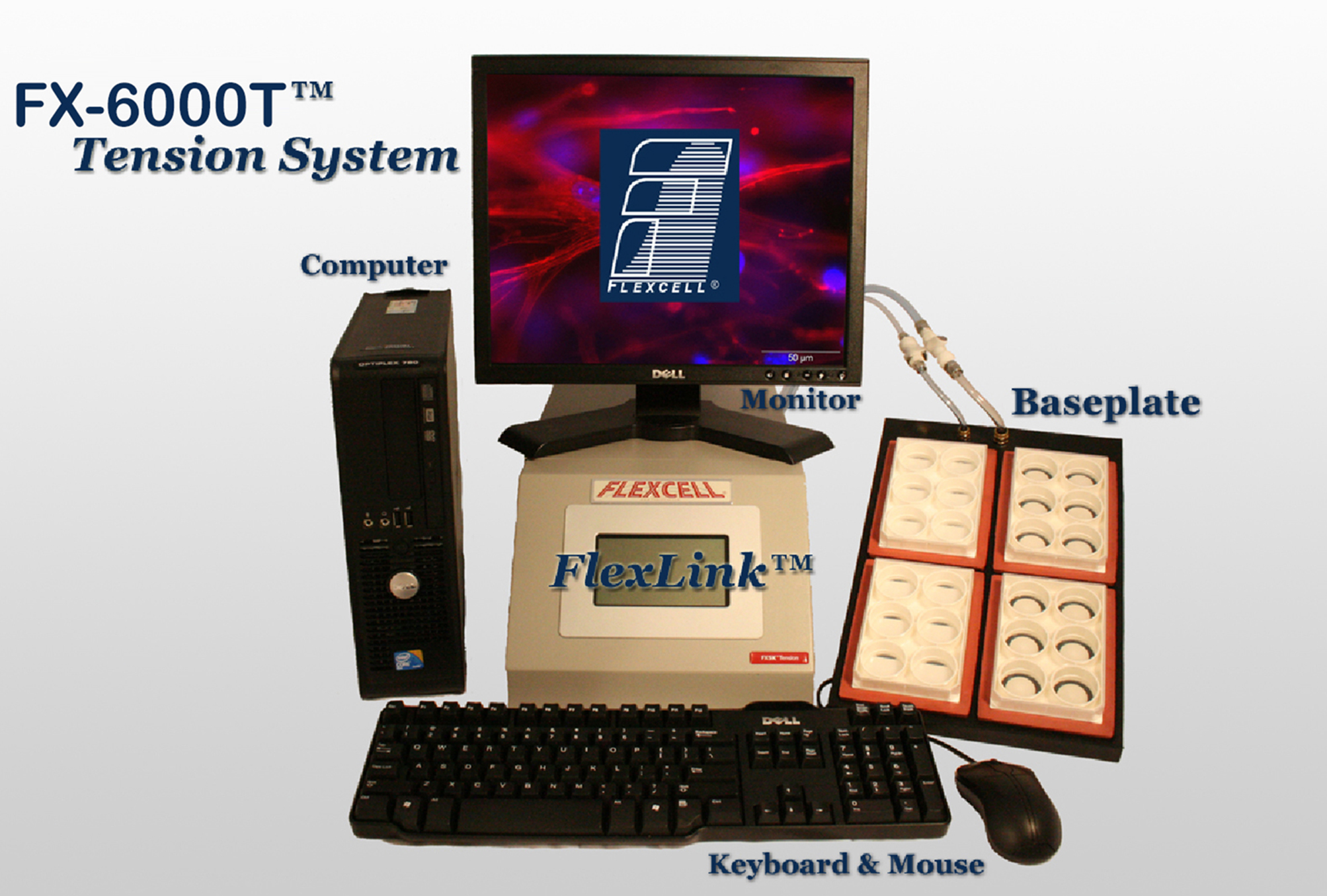Description
Thank you for your interest in flexercell products
Bio Excellence international Tech Co.,Ltd has been acting as sole agent for the sale of flexercell products for more than ten years,Bio Excellence can provide free technical guidance for flexercell tension, compression, fluid shear products, user site installation as well as training, until the user can use them without limng number of training times.If you have any questions, please do not hesitate to contact us.
BioFlex® Culture Plates
used with the flexercell Tension system for providing equibiaxial strain to cells in monolayer culture

Flexible-bottomed culture plates that work with the flexercell® Tension System to provide a mechanical load regimen to cells in monolayer (2D).
-
6-well culture plate with total growth surface area of 57.75 cm2 (or 9.62 cm2/well)
-
Rubber membranes are optically clear for direct viewing of cells with an inverted or upright microscope
-
Covalently bonded matrix surfaces: Amino, Collagen (Type I or IV), Elastin, Pronectin® (RGD), and Laminin (YIGSR)
Item Description
BF-3001U BioFlex Culture Plate — Untreated
BF-3001A BioFlex Culture Plate — Amino
BF-3001C BioFlex Culture Plate — Collagen Type I
BF-3001C(IV) BioFlex Culture Plate — Collagen Type IV
BF-3001E BioFlex Culture Plate — Elastin
BF-3001P BioFlex Culture Plate — ProNectin
BF-3001L BioFlex Culture Plate — Laminin
-
Comes with untreated surface for those labs that want to use their own ECM coating protocol
-
Available individually or in case quantity of 40 plates
Applications of BioFlex® Culture Plates
-
Mechanical Load - use with flexercell® Tension System to research the effects of equibiaxial tensile strain on cells in vitro
-
Softer Substrate - provides a softer substrate for cell growth (when compared to standard plastic culture dishes) which better mimics in situ condons for some cell types like trabecular meshwork cells (see Aga et al. Invest Ophthalmol Vis Sci 55(9):5497-509, 2014)
-
Lung Injury Models - Used to understand the impact of ARDS, COPD, COVID-19 related pulmonary injuries by simulating "cytokine storm", hyper-tension and hyperventilation to cells in vitro (See Huang et al., Am J Respir Crit Care Med., 195(5):639-65, 2017; Ke et al.,Mol iol Cell.30(8): 959–974
-
Traumatic Brain Injury - can be used in studies looking at traumatic injury in astrocytes and neurons, where the injury is produced with a Cell Injury Controller that controls a burst of gas which deforms the BioFlex® membrane creating large biaxial strains (see Ellis et al. J Neurotrauma 12 325–339, 1995; Ahmed et al. J Neurochem 74(5):1951-1960, 2000; Augustine et al. Neuroscience 274:1-10, 2014)
work with flexercell tension system:


|


